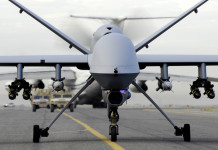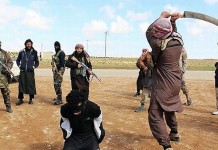The U.S. Military can now prepare soldiers for combat in specific, challenging settings with the push of a button.
That’s because of virtual reality. Satellite imagery, street view data, and other readily-available information about our world rapidly generate these Synthetic Training Environments (STE), based on a US Army white paper. Artificial intelligence renders the digital worlds based on the available information, analyzes soldier performance to make the trainings more effective, and introduces variability into the simulations to keep troopers on their toes.
The US Military isn’t new to virtual reality — it’s been utilizing the technology since 2012 — however the new STE means the folks in charge of training soldiers can create almost real, lifelike representations of actual locations way more quickly than ever before. Should soldiers need to be deployed, they’ll already know how to move through the surroundings as if they’d already been there, know what they need to know to win that battle.
The purpose is to make fight simulations as close to the real thing as possible. “Units train as they will fight, on the terrain [they] will fight on,” according to the white paper. More realistic environments also assist troops better plan for the logistics of warfare, such as travel time and coping with environmental conditions.
The Military has already built a virtual model of South Korea, North Korea, New York, San Francisco, and Las Vegas, according to army engineers who spoke to New Scientist. Thanks to this new system, the Military can simply choose a region from a map and the virtual environments will automatically generate within just a few days.
We don’t really know why the US Military has developed virtual versions of US cities. Whereas it’s admittedly creepy that soldiers could be preparing for a battle in the streets of New York, it is just as likely that information for American cities is easier to come across and the engineers wished to make a more realistic setting.
Previously, virtual reality training would happen in environments best described as “Afghanistan-like mountains” or other generic locations. With the Synthetic Training Environment, soldiers can encounter all sorts of terrain as it exists in the actual world, and also face a broader and more dynamic range of training situations.
By training in insanely life-like simulations, soldiers could be better prepared than ever for war, irrespective of whether it is in the streets of New York or North Korea.













